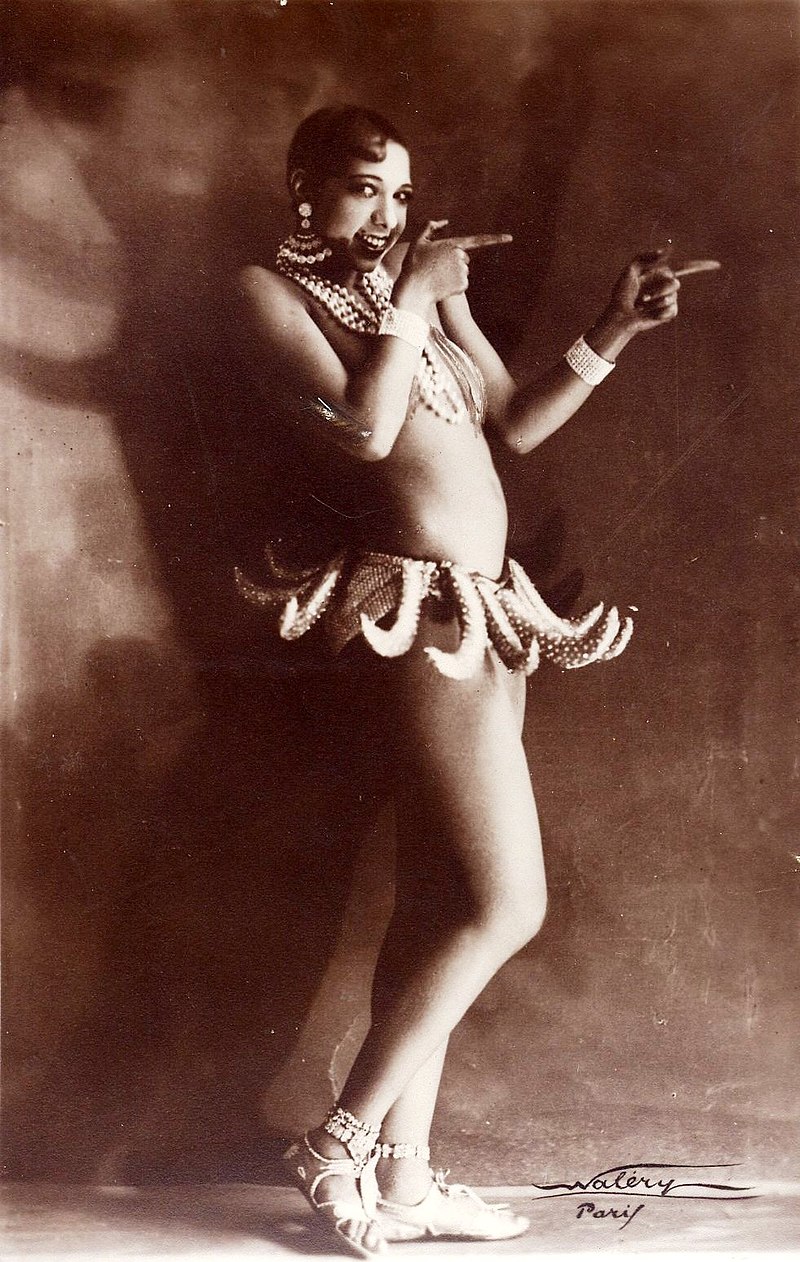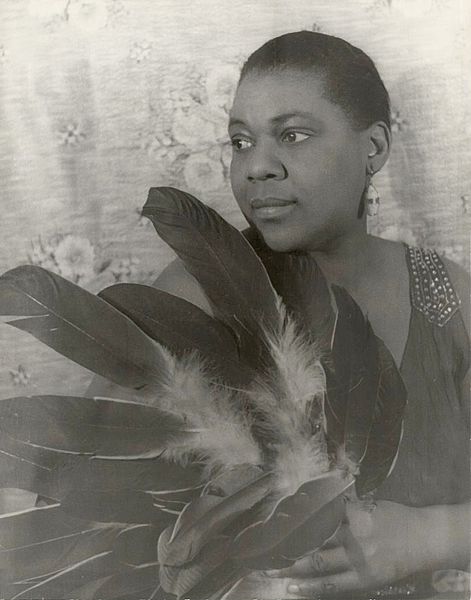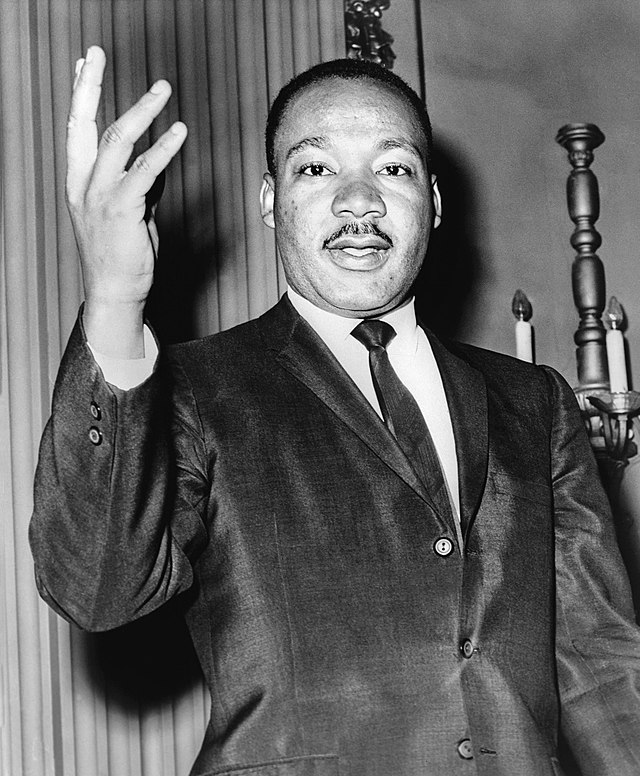segunda-feira, julho 18, 2022
A Batalha de Fort Wagner foi há 159 anos
Postado por
Fernando Martins
às
01:59
0
bocas
![]()
Marcadores: abolição da escravatura, afro-americanos, Fort Wagner, Guerra Civil Americana
sábado, julho 02, 2022
Os Estados Unidos reconheceram plenamente os direitos de negros e mulheres há 58 anos
Postado por
Fernando Martins
às
00:58
0
bocas
![]()
Marcadores: afro-americanos, direitos humanos, Lei de Direitos Civis de 1964, Lyndon B. Johnson, Martin Luther King, mulheres, segregação racial, USA
sexta-feira, junho 03, 2022
Josephine Baker nasceu há 116 anos
Josephine Baker, nome artístico de Freda Josephine McDonald, (Saint Louis, 3 de junho de 1906 - Paris, 12 de abril de 1975) foi uma célebre cantora e dançarina norte-americana, naturalizada francesa em 1937, e conhecida pelas alcunhas de Vénus Negra, Pérola Negra e ainda Deusa Crioula.
Postado por
Fernando Martins
às
01:16
0
bocas
![]()
Marcadores: afro-americanos, dança, França, Josephine Baker, La Conga Blicoti, música, resistência, Teatro de Revista, USA
quarta-feira, maio 25, 2022
Há 87 anos Jesse Owens teve 45 minutos mágicos
Postado por
Fernando Martins
às
08:07
0
bocas
![]()
Marcadores: afro-americanos, atletismo, Jesse Owens, record
quinta-feira, maio 19, 2022
Malcolm X nasceu há 97 anos
Postado por
Fernando Martins
às
09:07
0
bocas
![]()
Marcadores: afro-americanos, assassinato, direitos humanos, Islão, Malcolm X, USA
sexta-feira, abril 15, 2022
Bessie Smith nasceu há 128 anos...
Postado por
Fernando Martins
às
01:28
0
bocas
![]()
Marcadores: afro-americanos, Bessie Smith, blues, jazz, música, St.Louis Blues, USA
terça-feira, abril 12, 2022
Josephine Baker morreu há 47 anos
Josephine Baker, nome artístico de Freda Josephine McDonald, (Saint Louis, 3 de junho de 1906 - Paris, 12 de abril de 1975) foi uma célebre cantora e dançarina norte-americana, naturalizada francesa em 1937, e conhecida pelas alcunhas de Vénus Negra, Pérola Negra e ainda Deusa Crioula.
Postado por
Fernando Martins
às
00:47
0
bocas
![]()
Marcadores: afro-americanos, dança, França, J’ai deux amours, Josephine Baker, música, resistência, Teatro de Revista, USA
segunda-feira, abril 04, 2022
Martin Luther King foi assassinado há cinquenta e quatro anos...
Postado por
Fernando Martins
às
00:54
0
bocas
![]()
Marcadores: afro-americanos, assassinato, direitos humanos, Martin Luther King, Prémio Nobel
quinta-feira, março 31, 2022
Jesse Owens morreu há quarenta e dois anos
Postado por
Fernando Martins
às
00:42
0
bocas
![]()
Marcadores: afro-americanos, atletismo, Berlim, Hitler, Jesse Owens, Jogos Olímpicos
segunda-feira, fevereiro 21, 2022
Malcolm X foi assassinado há 57 anos
Postado por
Fernando Martins
às
00:57
0
bocas
![]()
Marcadores: afro-americanos, assassinato, Malcolm X, Nação do Islão
sábado, janeiro 15, 2022
Martin Luther King nasceu há 93 anos
Postado por
Fernando Martins
às
00:09
0
bocas
![]()
Marcadores: afro-americanos, I have a dream, Martin Luther King, paz, Prémio Nobel, segregação racial
quarta-feira, setembro 15, 2021
Um ataque terrorista matou quatro meninas há 58 anos
The 16th Street Baptist Church bombing was a white supremacist terrorist bombing of the 16th Street Baptist Church in Birmingham, Alabama, on Sunday, September 15, 1963. Four members of a local Ku Klux Klan chapter planted 19 sticks of dynamite attached to a timing device beneath the steps located on the east side of the church.
Postado por
Fernando Martins
às
00:58
0
bocas
![]()
Marcadores: afro-americanos, ataques terroristas, KKK, Ku Klux Klan, supremacistas brancos
sábado, agosto 28, 2021
Martin Luther King teve um sonho há 58 anos...
Postado por
Fernando Martins
às
00:58
0
bocas
![]()
Marcadores: afro-americanos, direitos humanos, Eu tenho um sonho, I have a dream, Martin Luther King
domingo, julho 18, 2021
A Batalha de Fort Wagner foi há 158 anos
Postado por
Fernando Martins
às
01:58
0
bocas
![]()
Marcadores: abolição da escravatura, afro-americanos, Fort Wagner, Guerra Civil Americana
sexta-feira, julho 02, 2021
Os Estados Unidos reconheceram os direitos de negros e mulheres há 57 anos
Postado por
Fernando Martins
às
00:57
0
bocas
![]()
Marcadores: afro-americanos, direitos humanos, Lei de Direitos Civis de 1964, Lyndon B. Johnson, Martin Luther King, mulheres, segregação racial, USA
quinta-feira, junho 03, 2021
Josephine Baker nasceu há 115 anos
Josephine Baker, nome artístico de Freda Josephine McDonald, (Saint Louis, 3 de junho de 1906 - Paris, 12 de abril de 1975) foi uma célebre cantora e dançarina norte-americana, naturalizada francesa em 1937, e conhecida pelas alcunhas de Vénus Negra, Pérola Negra e ainda Deusa Crioula.
Postado por
Fernando Martins
às
01:15
0
bocas
![]()
Marcadores: afro-americanos, dança, França, J'Ai Deux Amours, Josephine Baker, música, resistência, Teatro de Revista, USA
terça-feira, maio 25, 2021
Jesse Owens mostrou que era quase um super-homem há 86 anos
Postado por
Fernando Martins
às
08:06
0
bocas
![]()
Marcadores: afro-americanos, atletismo, Jesse Owens, record
quarta-feira, maio 19, 2021
Malcolm X nasceu há 96 anos
Postado por
Fernando Martins
às
09:06
0
bocas
![]()
Marcadores: afro-americanos, assassinato, direitos humanos, Islão, Malcolm X, USA
quinta-feira, abril 15, 2021
Bessie Smith nasceu há 127 anos
in Wikipédia
Postado por
Fernando Martins
às
01:27
0
bocas
![]()
Marcadores: afro-americanos, Back Water Blues, Bessie Smith, blues, jazz, música, USA
segunda-feira, abril 12, 2021
Josephine Baker morreu há 46 anos
Postado por
Fernando Martins
às
00:46
0
bocas
![]()
Marcadores: afro-americanos, dança, França, Josephine Baker, música, resistência, Teatro de Revista, USA













